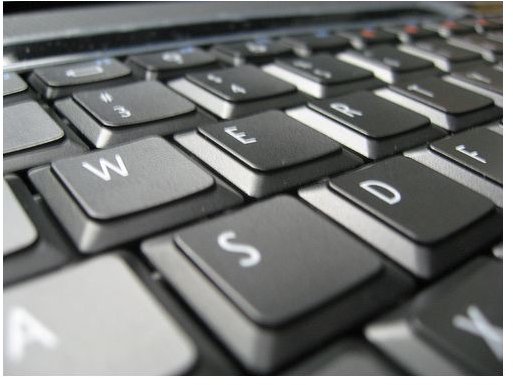Dell Laptop Keyboard Repair Guide
Fixing Stuck Keys
During the lifetime of a laptop computer the keyboard can become filled with dust and debris or even the occasional stray potato chip. These little bits of dirt build up under the keys and can cause limited contact with the circuit board. When this happens the best thing to do is purchase a can of compressed air to clean the keyboard. This will clear out almost all of the debris from beneath your keys and should restore full functionality to the formerly sticky keys.
If the compressed air doesn’t fix the problem you will have to gently remove the key(s) that are sticking and clean the retaining clip and surrounding area with a cotton swab dipped in alcohol. The alcohol dries quickly and will help remove sticky “gunk” from the circuit board area with minimal chance of causing more damage. Always remove the battery and unplug the laptop before using the alcohol swabs to minimize the chance of shock or circuit board damage.
Replacing Broken Retainer Clips
If your keys are not connected well (ex: they wiggle) or they have fallen completely off, you may need to replace the retainer clips. These are the white springy clips that hold the key to the circuit board. Retainer clips are notoriously fragile and once broken cannot be fixed. They have to be replaced. These clips can be purchased in bulk online or in small packages at a computer store (Staples, for example). If you are unsure of how the clip should look when it is in place, take off a key that works and look at the clip. Install the new clip by applying constant gentle pressure to the clip. You will hear a soft audible “click” when the retainer clip is in place. This is one of the more common Dell keyboard repairs.
If the retainer clip has been replaced and the keyboard keys are still not working you may have to replace the entire keyboard. Although this sounds like a job for a skilled technician it is actually a really easy part to replace.
Replacing the Entire Keyboard
If your keyboard has experienced a liquid catastrophe – a cat knocking over your coffee, a teenager spilling Mountain Dew or perhaps a baby spitting up – then you are probably going to have to replace the entire keyboard. The circuit board is highly sensitive and any liquid that gets into the keyboard will cause electrical arcing and cause irreparable damage to it. This Dell laptop keyboard repair is a bit more in depth and requires a small Philips head screwdriver, a small flathead screwdriver and a piece of tape.
Turn your computer off and remove the battery. Hold down the power button for 30 seconds to discharge any latent electrical charge in the system.
Pop off the bezel just above the function keys on the keypad. This is done by placing the flathead screwdriver under the opening between the function keys and the bezel. Slowly lift the bezel. You will hear a click, this is just the fastening clip being undone. There will be five to six fastening clips.
After you have removed the bezel you will see four (or five depending on the model) Philips head screws holding the keyboard in place. Remove these and place the screws on the tape so they don’t get lost.
Gently lift the keyboard out of its place. The connecting cord is still attached to the motherboard and pulling the keyboard too quickly could damage the connection point on the motherboard. Unhook the connection cord and discard the old keyboard.
Install the new keyboard in the opposite order. If none of the keys on the new keyboard work you may have inserted the connection cord upside down. If this is the case reinstall the keyboard with the connector flipped over.
References
Inside My Laptop.com : https://www.insidemylaptop.com/disassemble-hp-pavilion-dv4-laptop/ (accessed Feb 2011)
Image courtesy of FlickR.com/CLF https://www.flickr.com/photos/clf/3349187116/sizes/m/in/photostream/
